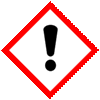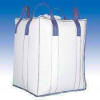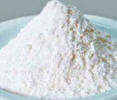| Anmol Chemicals is the pioneer manufacturers of Sodium Iodide, Pharmaceutical Excipients Fragrance Food & Flavor chemicals in India. We offer Halal and Kosher Sodium Iodide made in an ISO9001, ISO22000 (FSSC22000) cGMP and GLP certified facility. Our group has several manufacturing facilities spread across the world, supported by toll manufacturers and representatives in UAE, Europe, USA, China and has several associated manufacturing facilities spread across India. All the Information on Physics, Chemistry, Applications, Uses and Technology on Manufacture of Sodium Iodide is in these pages. |
| The units have one or more of the certifications like FDA GMP, ISO 9001, ISO 22000, HACCP, REACH, Kosher & Halal |
Sodium Iodide SDS GHS, MSDS Sheet
Sodium Iodide SDS GHS, MSDS Sheet, Material Safety Data Sheet
1. Product Identification
Synonyms: Sodium Monoiodide, Sodium Iodine, Anayodin., Hydroiodic Acid Sodium Salt
CAS No.: 7681-82-5(anhydrous); --- {13517-06-1(dihydrate)}
EINECS EC Number: 231-679-3
Molecular Weight: 149.89
Chemical Formula: NaI
Recommended usage: Industrial Manufacturing.
2. Hazards Identification
GHS, Globally Harmonized System Classification in accordance with 29 CFR 1910
Classification according to Regulation (EC) No 1272/2008
Acute toxicity, Oral (Category 4), H302
Skin irritation (Category 2), H315
Eye irritation (Category 2), H319
Hazardous to the aquatic environment, acute hazard Category 1, H400
Labeling according GHS & Regulation (EC) No 1272/2008
| GHS Label Elements  Irritant |
Signal Words: Warning
Hazard statements:
H302: Harmful if swallowed.
H315: Causes skin irritation.
H319: Causes serious eye irritation.
H400: Very toxic to aquatic life.
Precautionary statements:
P264: Wash … thoroughly after handling.
P270: Do not eat, drink or smoke when using this product.
P273: Avoid release to the environment.
P280: Wear protective gloves/protective clothing/eye protection/face protection.
P330: Rinse mouth.
P362: Take off contaminated clothing and wash before reuse.
P301+312: IF SWALLOWED: Call a POISON CENTER or doctor/physician if you feel unwell.
P302+352: IF ON SKIN: Wash with soap and water.
P332+313: If skin irritation occurs: Get medical advice/attention.
P305+351+338: IF IN EYES: Rinse cautiously with water for several minutes. Remove contact lenses if present and easy to do – continue rinsing.
P337+313: If eye irritation persists get medical advice/attention.
P391: Collect spillage.
P501: Dispose of contents/container to authorized agents only.
Classification according to EU Directives 67/548/EEC or 1999/45/EC:
Xi Irritant R36/38
N Dangerous for the environment R50
For the full text of the H-statements & R-phrases mentioned in this Section, see Section 16.
HMIS (Perceived): Health hazard: 2, Flammability: 0, Physical hazards: E
NFPA (Perceived): Health hazard: 2, Fire: 0, Reactivity Hazard: 0, Contact Rating: 3 - Severe, Protective Equip: Goggles, Lab Coat.
3. Composition/Information on Ingredients
Ingredient: Sodium Iodide
CAS No.: 7681-82-5 (anhydrous)
EINECS EC Number: 231-679-3
Percent: 97 - 100%
4. First Aid Measures
Always seek medical attention after first aid measures are provided.
Inhalation: Remove to fresh air. If not breathing, give artificial respiration. If breathing is difficult, give oxygen. Get medical attention.
Ingestion: Never give anything by mouth to an unconscious person. Get medical attention.
Skin Contact: Wipe off excess material from skin then immediately flush skin with plenty of water for at least 15 minutes. Remove contaminated clothing and shoes. Get medical attention. Wash clothing before reuse. Thoroughly clean shoes before reuse.
Eye Contact: Immediately flush eyes with plenty of water for at least 15 minutes, lifting lower and upper eyelids occasionally. Get medical attention immediately.
Notes to Physician: Treat symptomatically and supportively.
5. Fire Fighting Measures
Flammability of the Product: Non-flammable.
Auto-Ignition Temperature: Not applicable.
Flash Points: Not applicable.
Products of Combustion: Hydrogen Iodide, Iodine, Oxides of Sodium etc..
Fire: Sodium Iodide is not considered to be a fire hazard.
Explosion: Not an explosive item.
Fire Extinguishing Media: Use means suitable for extinguishing surrounding fire. Use water spray, alcohol-resistant foam, dry chemical or carbon dioxide.
Special Information: In the event of a fire, wear full protective clothing and NIOSH-approved self-contained breathing apparatus with full face piece operated in the pressure demand or other positive pressure mode. At high temperatures or when moistened under fire conditions, it may produce toxic or irritating fumes. On decomposition it may emit hydrogen iodide. Containers may explode on heating
6. Accidental Release Measures
Small Spill: Avoid dust formation. Avoid breathing dust. Ensure adequate ventilation. Use appropriate tools to put the spilled solid in a convenient waste disposal container. Finish cleaning by spreading water on the contaminated surface and dispose of according to local and regional authority requirements.
Large Spill: Avoid touching the spilled material. Do not let the product enter drains. Use a shovel to put the material into a convenient waste disposal container. Finish cleaning by spreading water on the contaminated surface and allow to evacuate through the sanitary system.
7. Handling and Storage
Do not breathe dust. Wear suitable protective clothing. In case of insufficient ventilation, wear suitable respiratory equipment.
Avoid contact with skin and eyes. Avoid formation of dust and aerosols. Wash hands thoroughly after handling. Provide appropriate exhaust ventilation at places where dust is formed. If you feel unwell, seek medical attention.
Keep Sodium Iodide in a tightly closed container, stored in a cool, dry, ventilated area, under inert atmosphere. Protect against physical damage.
8. Exposure Controls/Personal Protection
Airborne Exposure Limits: Not Specified.
Ventilation System: A system of local and/or general exhaust is recommended to keep employee exposures as low as possible. Local exhaust ventilation is generally preferred because it can control the emissions of the contaminant at its source, preventing dispersion of it into the general work area.
Personal Respirators (NIOSH Approved): For conditions of use where exposure to dust or mist is apparent and engineering controls are not feasible, a particulate respirator may be worn. For emergencies or instances where the exposure levels are not known, use a full-face positive-pressure, air-supplied respirator.
Skin Protection: Wear protective gloves and clean body-covering clothing.
Eye Protection: Use chemical safety goggles and/or full face shield where dusting or splashing of solutions is possible. Maintain eye wash fountain and quick-drench facilities in work area.
Other Control Measures: Maintain good housekeeping in work area. Dust deposits on floors and other surfaces may pick up moisture and cause the surfaces to become slippery and present safety hazards. Handle in accordance with good industrial hygiene and safety practice. Wash hands after handling.
9. Physical and Chemical Properties
Appearance: Sodium Iodide is colorless white powder or crystals.
Odor: It is odorless.
Solubility: It is freely soluble in water.
pH: 6-9.
Density: 3.7 g/mL at 20C (68F)
Molecular formula: NaI
Molecular weight: 149.89
% Volatile by volume @ 21C (70F): -
Boiling Point: 1300C
Melting Point: 651C
10. Stability and Reactivity
Stability: Sodium Iodide is stable under ordinary conditions of use and storage. Absorbs up to moisture on exposure to air and becomes brown due to liberation of iodine.
Hazardous Decomposition Products: It emits toxic iodide or hydrogen iodide fumes when heated to decomposition. It may form Sodium oxide and hydrogen iodide and iodide and irritating fumes.
Hazardous Polymerization: Will not occur.
Incompatibilities: Strong oxidizing agents, metals & acids.
Conditions to Avoid: Incompatibles light and moisture.
11. Toxicological Information
Toxicity data
ORL-RAT LD50 4340 mg kg-1
ORL-MOUSE LD50 1000 mg kg-1
LD50 (Intravenous, Rat): 1060 mg/kg
LD50 (Intraperitoneal, Mouse): 430 mg/kg
Acute toxicity
Harmful if swallowed. Harmful if inhaled.
Carcinogenic Effects: Not known to be a carcinogen.
Mutagenic Effects: NA.
Teratogenic Effects: Iodine salts can cause deformity, illness, and death of a fetus..
12. Ecological Information
Toxicity to fish: LC50 - Oncorhynchus mykiss (rainbow trout) - 860 mg/l - 96 h
Toxicity to daphnia and other aquatic invertebrates: EC50 - Daphnia magna (Water flea) - 0,17 mg/l - 48 h
Environmental Toxicity: Very toxic to aquatic life..
Products of Biodegradation: Possibly hazardous short term degradation products are not likely. However, long term degradation products may arise.
13. Disposal Considerations
Whatever cannot be saved for recovery or recycling should be managed in an appropriate and approved waste disposal facility. Processing, use or contamination of this product may change the waste management options. State and local disposal regulations may differ from federal disposal regulations. Dispose of container and unused contents in accordance with federal, state and local requirements.
14. Transport Information
US DOT & ADR/RID: Not regulated.
Canada TDG Classification: Not regulated.
IATA: Not regulated.
15. Regulatory Information
USA:
OSHA Hazards: Not Hazardous as per OSHA
SARA 302 Components: No chemicals in this material are subject to the reporting requirements of SARA Title III, Section 302.
SARA Codes: --: acute, chronic.
SARA 313 Components: No chemicals in this material are subject to the reporting requirements
SARA 311/312 Hazards: Component CAS# 7681-11-0: 1, Immediate Health Hazard, Chronic Massachusetts Right To Know Components: Not Listed
Pennsylvania Right To Know Components: 7681-82-5
New Jersey Right To Know Components: 7681-82-5
California Prop. 65 Components: This product does not contain any chemicals known to State of California to cause cancer, birth defects, or any other reproductive harm.
Clean Air Act:
This material does not contain any hazardous air pollutants.
This material does not contain any Class 1 Ozone depletors.
This material does not contain any Class 2 Ozone depletors.
Clean Water Act:
None of the chemicals in this product are listed as Hazardous Substances under the CWA. None of the chemicals in this product are listed as Priority Pollutants under the CWA. None of the chemicals in this product are listed as Toxic Pollutants under the CWA.
TSCA: Listed
Health & Safety Reporting List: Not on the Health & Safety Reporting List.
Chemical Test Rules: None of the chemicals in this product are under a Chemical Test Rule.
Section 12b: None of the chemicals are listed under TSCA Section 12b.
TSCA Significant New Use Rule: Does not have a SNUR under TSCA.
CERCLA Hazardous Substances and corresponding RQs: Not Listed
WGK (Water Danger/Protection): CAS# 7681-82-5: 1
Canada - WHMIS: Not controlled under WHMIS (Canada).
Canadian Ingredient Disclosure List: CAS# 7681-11-0 is not listed on the Canadian Ingredient Disclosure List.
Canada - DSL/NDSL: CAS# 7681-82-5 is listed on Canada's DSL List
16. Other Information
EINECS EC Number: 231-679-3
H302 = Harmful if swallowed.
H315 = Causes skin irritation.
H319 = Causes serious eye irritation.
H400: Very toxic to aquatic life.
Xi = Irritant.
N = Dangerous for the environment.
R22 = Harmful if swallowed.
R36/38 = Irritating to eyes and skin.
R50 = Very toxic to aquatic organisms.
Disclaimer:
******************************
Our company provides this Sodium Iodide MSDS sheet in good faith but makes no representation as to its comprehensiveness or accuracy. This Sodium Iodide MSDS sheet is intended only as a guide to the appropriate precautionary handling of the material by a properly trained person using this product. The above information has been compiled from various sources and has the possibility of discrepancy and being out-dated information. Individuals receiving the information must exercise their independent judgment and do further search in determining its appropriateness for a particular purpose. In no case shall our company be liable to loss or damages by the product user.
******************************
Sodium Iodide Manufacturers:
Anmol Chemicals
S-8, SARIFA MANSION, 2ND FLANK ROAD, CHINCHBUNDER, MUMBAI 400009, INDIA
TEL: (OFFICE) 91-22-23770100, 23726950, 23774610, 23723564. FAX: 91-22-23728264
e-mail: anmolc@mtnl.net.in
Exports to USA, Canada, UAE, Dubai, South Africa, Tanzania, Kenya, Nigeria, Egypt, Uganda, Turkey, Mexico, Brazil, Chile, Argentina, Europe Netherlands, Italy, Spain, Germany, Portugal, France, Malaysia, Indonesia, Thailand, Korea, Japan, etc.
Copyright and Usual Disclaimer is Applicable. 17 February, 2022




